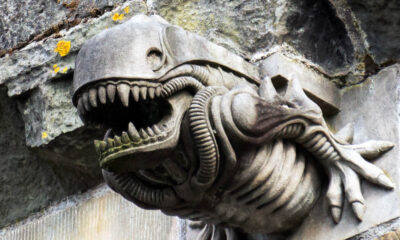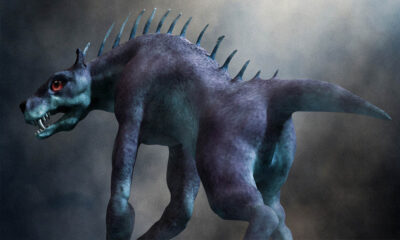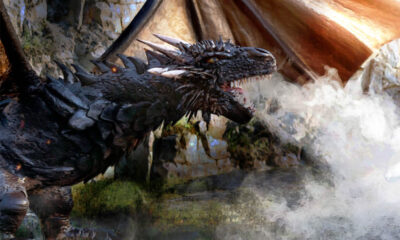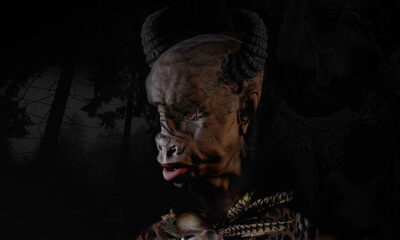Cryptids
Ogopogo – Nessie’s Canadian Cousin?
As far as Canadians are concerned this is the king of North American lake monsters. Silently gliding through the depths of Okanagan Lake, a mysterious and awe-inspiring creature known as Ogopogo has woven its serpentine legend into the very fabric of British Columbia’s rich folklore, leaving ripples of wonder and intrigue in its aquatic wake.

Ogopogo – Older than the Loch Ness Monster
Ogopogo is the name given to the alleged monster of Lake Okanagan in British Columbia, Canada. As far as Canadians are concerned this is the king of North American lake monsters. Ogopogo has also been referred to as the Nessie of North America but reports about the existence of a creature in Lake Okanagan significantly predate those relating to the Loch Ness monster.
Modern reports relating to Ogopogo date back to 1850 but long before Canada was settled the Native Canadians, particularly the Syilx, already had oral histories referring to a similar creature. They believed that a supernatural beast called N’ha-a-itk lived in the lake and had to be appeased by food or it would kill anyone who tried to cross the water. Today Ogopogo has become an integral part of local tourism and even has its own life-sized statue in one of the parks.

Ogopogo, Uktena, N’ha-a-itk Legend First Nation Peoples (Shutterstock)
Okanagan Lake is roughly 70 miles in length (84 if you include the split) and has a surface area of 351 km² making it the largest of the lakes in the Okanagan Valley. It is located at an altitude of 342 m and was formed about 10 000 years after the end of the last ice age when retreating ice sheets revealed a natural dam. Its maximum depth is estimated at 232 m but many residents are convinced that in some places the depth is much greater. The surrounding area with its fertile soils have made it popular with fruit tree growers. Several cities have been built along the shores of the lake including Vernon, Penticton, Kelowna and Westside. Its southern most point is only 34 miles from the Canadian American border.
Famous Sightings
Reports regarding this monster are numerous and often detailed. One of the first took place in July 1890 when Captain Thomas Shorts, of the steamship Jubilant, observed a five metre long creature with a large ram’s head just off Squally Point. There were at least another dozen before 1935 and the Vancouver Newspaper wrote several sensational articles that made our famous monster. Among the many eye witness accounts there are of course many are hoaxes – but some facts are worth noting.
On 2 July 1949 Mr. Leslie Kerry took his friends, the Watson family, on a boat ride. While on the lake but still close to the shore, they noticed a long reptilian form undulating vertically under the surface. The body was about nine meters long and the observers stated that they saw a forked tail which moved up and down. They described it as being black and smooth with serpentine sections that rose above the surface about 2 meters apart. They weren’t the only witnesses. People standing at the water’s edge were able to see the creature with binoculars as it remained visible for near quarter of an hour.
On 23 July 1968 five young water skiers observed a bizarre creature. Sheri Campbell was the first to see the six metre long animal as it floated to the surface. She was so surprised and frightened that she dropped the rope and nearly drowned. Ogopogo, if that is what it was, suddenly swam away so fast that the youngsters in the boat could keep up with it.
It is rare for journalists to be witnesses to the appearance of lake-cryptids but this exactly what happened to Dick Miller, the editor of Vernon Advertiser, in 1959. Together with friends he was enjoying a short cruise when they all witnessed what looked like a giant snake following the wake of the boat some 75 metres behind them. They described it as having dark green or black coils that undulated vertically through the water at a speed of roughly 25 miles per hour. As it neared the boat it went underwater and disappeared.
On the 3rd August 1976, Ed Fletcher of Vancouver managed to take a series of five photos of the lake monster although they were not very clear and by his own admission he and his friends had been out on the lake specifically looking for Ogopogo.
During August 1968, an amateur film was taken by Mr. Art Folden. He and his wife were returning home along the lake shore and just south of Peachland when they noticed something big move in the water. He took a series of clips … only filming the object when it was clearly visible on the surface. At first Folden did nothing with the film until his brother persuaded him to publish it. Released in 1970 the film quickly became a media sensation. Not unexpectedly, the scientific community did their best to debunk the footage but it still remains some of the best evidence for the actual existence of Ogopogo.
Ogopogo as a Tourist Attraction
A significant tourism industry has built up around the legend of Ogopogo and encourages many people to visit the lake each and every year. Several organisations have offered substantial rewards for indisputable proof be it clear photographs or actual physical evidence that can be tested for DNA. Cryptozoologists believe that Ogopogo is either a giant snake or even a surviving plesiosaur. They are concerned that the development towns and marinas along the edge of the lake may have driven the creatures away.

Sonar Scan Underwater (C) Clint Pavenu
X FILES
The X-Files TV episode entitle ‘Quagmire’ featured a lake monster named ‘Big Blue’ which is believed to have been based on Ogopogo. (Season 3 / Episode 22). In 2005 a television series by National Geographic ‘Is It Real: Monsters of the Deep’ had several sections reviewing the evidence pertaining to Ogopogo. In general, marine biologists believe that if the creature ever existed it is now probably extinct. Cryptozoologist point out that this region of the USA and Southern Canada is vast, largely uninhabited, when compared to other regions, and has dozens of large lakes and countless smaller ones. The most recent photos of something unexplained in Lake Okanagan were taken in 2002. The most recent document sighting without photographic material was recorded in 2006. A video said to be of Ogopogo was taken as recently as 2011 but analysis of the footage suggests that the shapes are almost certainly logs … almost certainly.

























